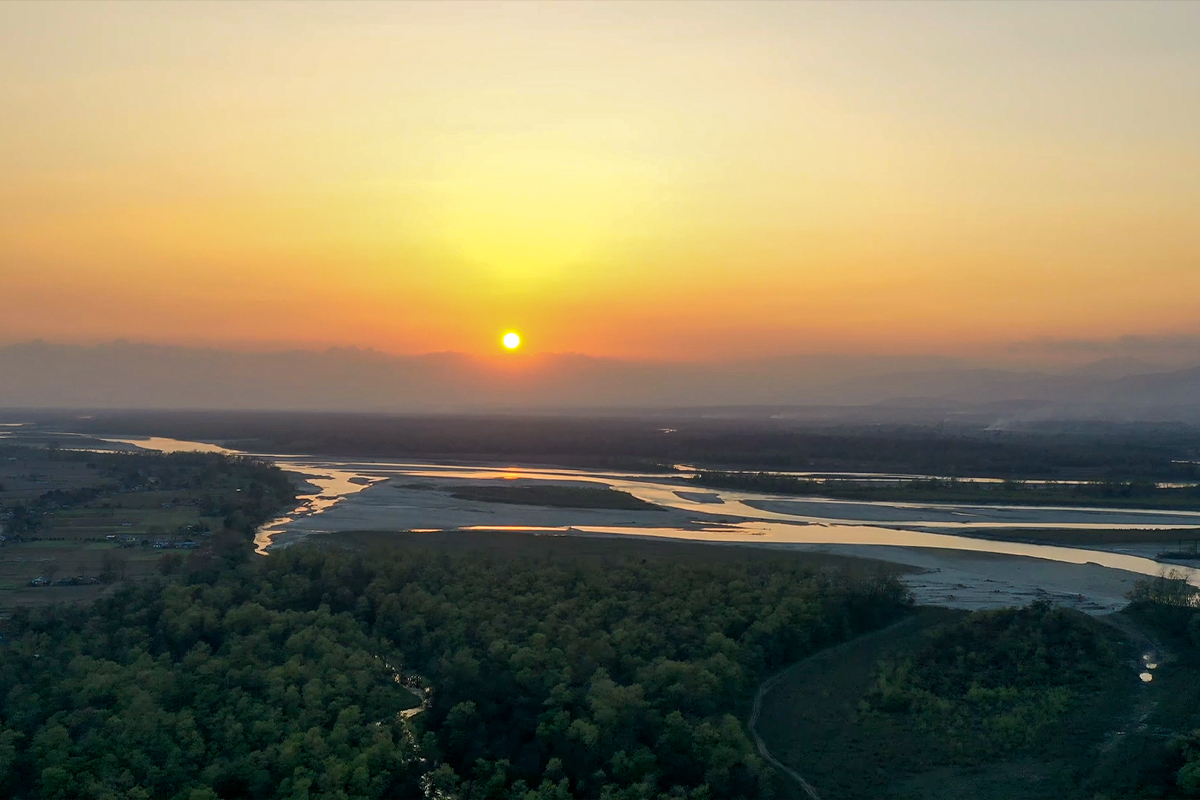Lumbini, The Birthplace of Gautam Buddha
Lumbini, located in southern Nepal, is a UNESCO World Heritage Site and one of the world's most significant Buddhist pilgrimage destinations, and it is a place you shouldn’t miss in Nepal. As the birthplace of Siddhartha Gautam, who later became known as Gautam Buddha, Lumbini holds immense historical and spiritual importance. Despite its significance, many foreigners overlook this sacred site, but you must not miss this extraordinary place.
The site features the sacred Mayadevi Temple, marking the exact spot where Queen Mayadevi gave birth to Prince Siddhartha Gautam. You can also explore the Ashoka Pillar, erected by Emperor Ashoka in 249 BCE to commemorate his pilgrimage to Lumbini. The surrounding Sacred Garden houses ancient ruins, monasteries, and a serene atmosphere perfect for meditation and reflection.
During your visit to Lumbini, you can immerse yourself in a variety of enriching activities. Take a peaceful stroll through the Sacred Garden, join meditation sessions at various monasteries, or attend Buddhist teachings and ceremonies. You can rent bicycles to explore the expansive grounds, visit the Lumbini Museum to delve deeper into Buddhist history and art or participate in yoga classes offered by some retreats. Don't miss the opportunity to light butter lamps at the World Peace Pagoda, a symbol of harmony and tranquility. As the day ends, witnessing the sunset over the serene landscapes of Lumbini can be a truly spiritual experience.
Reaching Lumbini from Kathmandu is convenient. You can take a quick 35-minute flight to Gautam Buddha International Airport or an 8-10-hour journey by road. Tourist buses offer comfortable travel if you prefer a scenic route. Upon arrival, you can choose from a range of accommodation options, from budget guesthouses and mid-range hotels to luxury resorts. Some monasteries also offer simple rooms for a unique cultural experience.

Changunarayan Temple, built in the 5th century
Changunarayan Temple, located in the Bhaktapur district, stands as a must-visit destination in Nepal for travelers eager to explore Nepal's rich cultural heritage. Built-in the 5th century, this ancient Hindu shrine ranks among Nepal's oldest and is recognized as a UNESCO World Heritage Site.
Perched on a hilltop around 12 kilometers east of Kathmandu, Changunarayan offers breathtaking views of the surrounding valley. Dedicated to Lord Vishnu, the temple showcases stunning Newari architecture adorned with intricate wood and stone carvings, along with ancient inscriptions. As you wander through the temple complex, you'll encounter remarkable statues, including the renowned Garuda statue, and delve into captivating legends linked to the site. The temple's courtyard hosts numerous smaller shrines and artworks that reflect centuries of Nepali history and craftsmanship.
A visit to Changunarayan provides a rare chance to journey through time and immerse yourself in Nepal's spiritual and artistic traditions. Its serene ambiance and profound historical significance make it an ideal spot for history enthusiasts, art lovers, and those curious about Nepal's cultural origins. To reach Changunarayan, a short drive from Kathmandu suffices, or you can combine your visit with a trip to the nearby ancient city of Bhaktapur. Engaging a local guide enhances the experience, ensuring you grasp the temple's full historical and cultural significance.
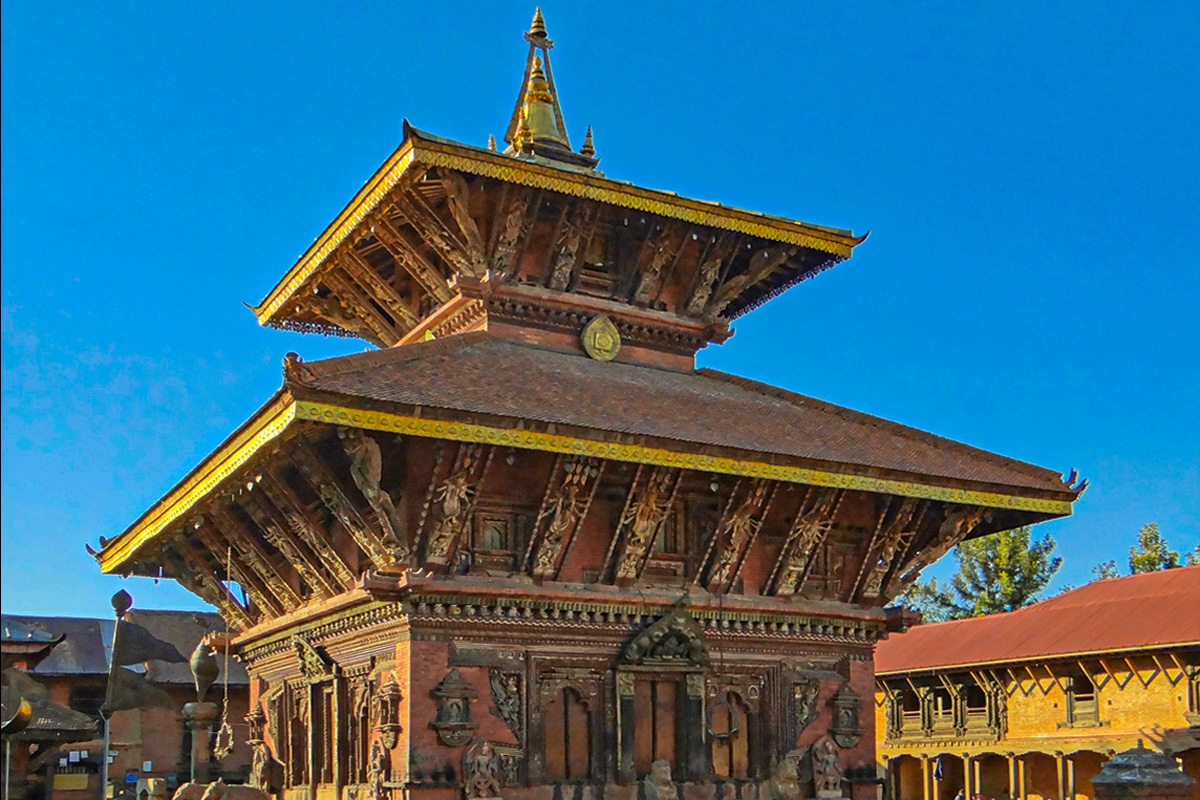
Newari food in Kritipur
Kirtipur, another place not to miss in Nepal, is renowned for its stunning architecture and delicious Newari cuisine. This picturesque hill town, with its paved streets, traditional red-brick houses, and tiled roofs, lets visitors experience authentic Newar culture.
To truly enjoy Kritipur, savor its food. Newari cuisine, deeply rooted in the culture of the Kathmandu Valley's indigenous people, promises a culinary adventure. The town boasts famous Newari food restaurants like SASA twa and Newa: Lahana, where visitors can indulge in authentic flavors.
Newari cuisine offers a unique blend of savory, sweet, and spicy flavors using local ingredients and traditional cooking methods. Popular dishes include 'yomari', a sweet steamed dumpling filled with chaku (jaggery or molasses) or khuwa (thickened milk); 'kwati', a nutritious mixed bean soup; 'bara', a savory lentil pancake; and 'choila', a spicy grilled buffalo meat dish. Try 'samay baji', a ceremonial platter with beaten rice, grilled meat, and assorted side dishes for various flavors.
Kritipur is also known for 'aila', a traditional Newari liquor made from fermented rice, often served with meals during celebrations. As you explore Kritipur's narrow lanes and ancient temples, you'll find small shops selling Newari snacks like 'bara' and 'chatamari' (Newari rice crepe), providing a delicious way to refuel while sightseeing. Savor these delectable snacks while taking in breathtaking views of the Kathmandu Valley, creating a truly memorable dining experience.
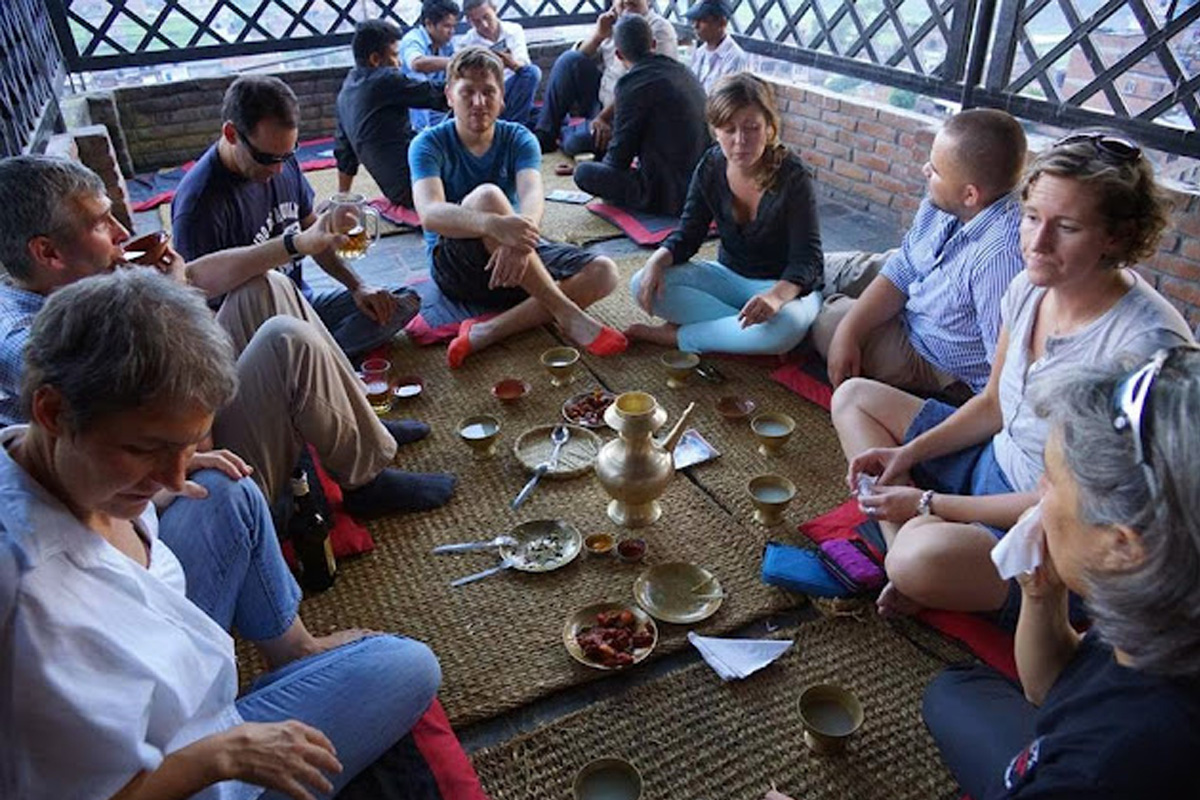
Janaki Mandir, Janakpur
Janaki Mandir in Janakpur is a hidden treasure that many travelers to Nepal often overlook. This magnificent marble temple, dedicated to the Hindu goddess Sita, is a must-visit destination for those wanting to explore beyond the usual tourist spots in Nepal.
Built in 1911, Janaki Mandir showcases stunning Mughal and Rajput architecture. Its bright white exterior and intricate carvings immediately catch the eye, making it stand out from other Nepali temples. The temple's unique design and peaceful atmosphere offer visitors a refreshing change from busier tourist areas, allowing for a more personal and meaningful experience.
Visiting Janaki Mandir provides insight into the Madheshi culture of southern Nepal and the chance to witness colorful religious festivals. The surrounding town of Janakpur, with its nearby Dhanush Sagar and Ganga Sagar ponds, invites further exploration. Travelers can also enjoy authentic local cuisine, adding a flavorful dimension to their visit.
Beyond the temple, visitors can explore vibrant local markets, take a boat ride on the sacred ponds, visit the Ram Sita Bibaha Mandap (wedding site of Ram and Sita), or take a day trip to the nearby Mithila Wildlife Sanctuary. The area is also known for its colorful Mithila art, and tourists can visit local artisans to see this traditional craft in action.
Janakpur offers a range of budget to mid-range accommodation options near the temple, such as Hotel Welcome and Rama Resort. The town is accessible by air with 45-minute flights from Kathmandu, or by bus from major cities. Once there, the centrally located temple is easily reachable by rickshaw or on foot.
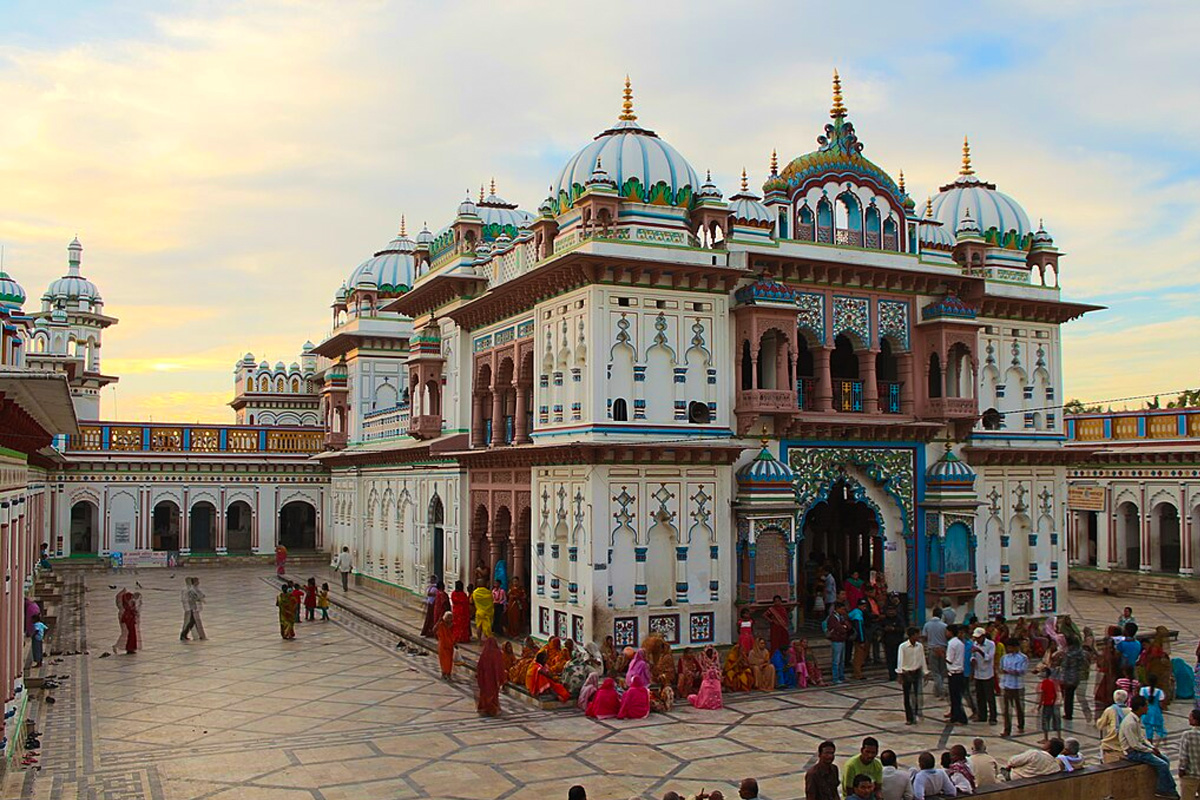
Wildlife Safari at Baridya National Park
Bardiya National Park, often overshadowed by the more famous Chitwan National Park, is a hidden paradise for wildlife enthusiasts in Nepal. While Chitwan National Park draws crowds with its accessibility and developed infrastructure, Bardiya offers a more rugged and authentic safari experience. Located in the Terai region of southwestern Nepal, this park is the country's largest lowland sanctuary, boasting a pristine wilderness that feels untouched by mass tourism.
In Bardiya National Park, you have a higher chance of spotting Bengal tigers due to their higher density here compared to other parks. The park's diverse ecosystem supports a rich variety of wildlife, including endangered one-horned rhinoceros, wild elephants, and over 250 species of birds. You can enjoy a range of activities, from jeep safaris and guided jungle walks to elephant bathing experiences and canoe rides on the Karnali River. Cultural enthusiasts can explore nearby Tharu villages, while adventure seekers might opt for night safaris or camping in the buffer zone.
Bardiya offers accommodation options for various budgets, ranging from basic guesthouses to comfortable jungle lodges. Popular choices include Tiger Tops Karnali Lodge, Bardiya Eco Lodge, and Jungle Villa Resort. These lodges often arrange safari activities and provide knowledgeable guides, enhancing your overall experience.
Reaching Bardiya requires a bit more effort compared to more accessible parks, which adds to its charm as an off-the-beaten-path destination in Nepal. You can fly to Nepalgunj from Kathmandu or Pokhara, followed by a 2-hour drive to the park. Alternatively, bus services are available from major cities, though the journey can be long.
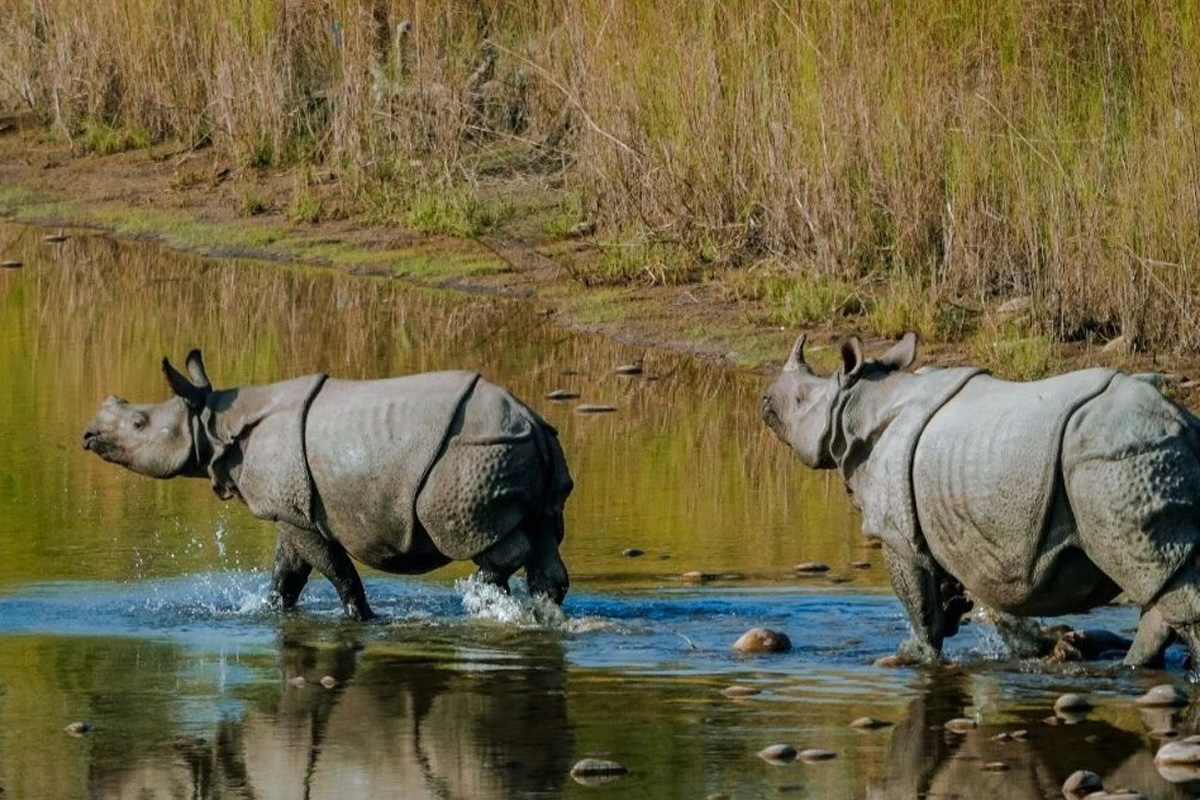
Historic Gorkha Durbar
Gorkha Durbar, a historic palace located in the Gorkha district, is often missed by many travelers visiting Nepal. This ancient palace is the birthplace of King Prithvi Narayan Shah, the founder of modern Nepal, and holds immense historical and cultural significance. Built-in the 16th century, Gorkha Durbar is not just a palace but a monument to Nepal's architectural mastery. Perched atop a hill, it offers stunning views of the surrounding valleys and the majestic Himalayas, making it a photographer's delight.
Visitors to Gorkha Durbar can explore the intricately carved wooden windows and doors and marvel at the blend of Newari and Mughal architectural styles. The complex includes the main palace, temples, and fortifications that tell the story of King Prithvi Narayan Shah, who began his campaign to unify Nepal from this very spot. You can soak in the spiritual atmosphere of the Gorakhnath Cave Temple and visit the Gorkha Museum, which showcases artifacts and exhibits related to the history of the Gorkha kingdom and the unification of Nepal.
One of the unique aspects of visiting Gorkha Durbar is the journey itself. The climb to the palace complex involves ascending 1,700 stone steps, offering a physical challenge and stunning vistas along the way. For those seeking a less strenuous route, a motorable road leads close to the palace. The town of Gorkha, situated at the base of the hill, is worth exploring as well. It offers insights into local life and culture with its bustling bazaars, traditional houses, and friendly locals. You can sample authentic Nepali cuisine and witness daily life in a town that played a pivotal role in shaping Nepal's history.
Accommodation and amenities in Gorkha are basic but adequate. While luxury options are limited, several comfortable guesthouses and small hotels are available in the town below the palace. Most provide essential amenities and can arrange local guides for exploring the Durbar complex. For dining, local restaurants offer traditional Nepali dishes, and a few shops sell souvenirs and essentials.
Reaching Gorkha is relatively straightforward, with regular bus services from Kathmandu and Pokhara. The journey takes about 5-6 hours from Kathmandu, offering scenic views of rural Nepal along the way. For those short on time, hiring a private vehicle can be a more comfortable option.
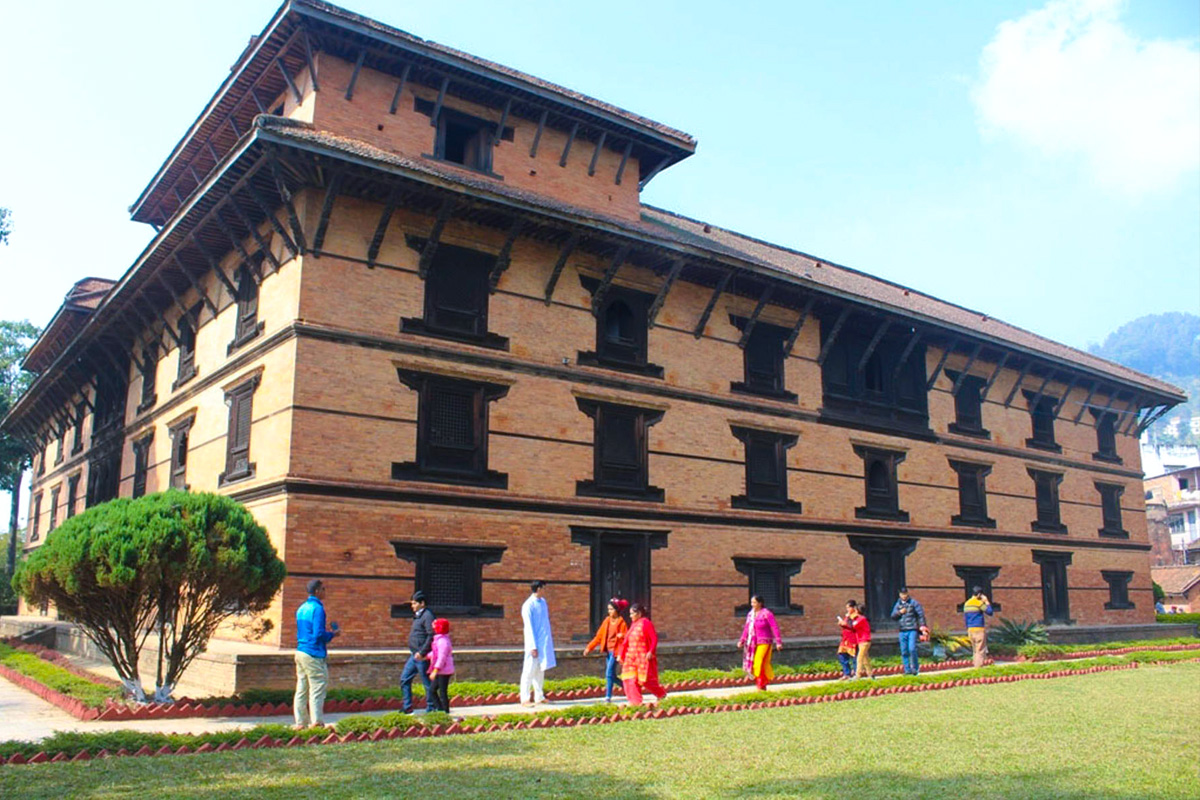
Panauti Village and Its Culture and History
Panauti Village, located just 32 kilometers southeast of Kathmandu, is an underrated place in Nepal and a must-visit destination. This charming village is rich in culture, history, and beautifully preserved traditional Newari architecture. As one of the oldest towns in Nepal, Panauti provides a fascinating glimpse into the country's ancient past and vibrant traditions.
The village sits at the confluence of two rivers, and local legends say that a third invisible river also flows here, making it a sacred place. Panauti is home to several important temples, including the Indreshwar Mahadev Temple, believed to be the oldest surviving pagoda in Nepal. Dating back to the 13th century, it showcases the finest examples of Newari craftsmanship. Visitors can admire intricate wood carvings and ancient statues in this peaceful and spiritual temple complex. Nearby, the Brahmayani Temple and the Krishna Narayan Temple add to the town's spiritual ambiance.
Panauti's rich cultural heritage is evident in its festivals and daily life. The village hosts various traditional festivals, with the most notable being the Panauti Jatra, featuring colorful processions, music, and dances. Walking through the narrow, cobbled streets, visitors can watch local artisans at work, creating beautiful pottery, woodwork, and traditional Newari cuisine.
Staying in Panauti offers a chance to experience authentic Nepali village life. Several homestay options allow visitors to stay with local families, enjoy home-cooked meals, and learn about the local way of life. These homestays often provide guided tours of the village, taking visitors to historical sites, local markets, and scenic viewpoints.
Getting to Panauti is easy, with regular buses and taxis available from Kathmandu. The journey takes about an hour and offers picturesque views of the countryside. Panauti's serene environment, rich history, and warm hospitality make it a perfect escape from the hustle and bustle of the city, offering a unique and memorable experience for travelers in Nepal.
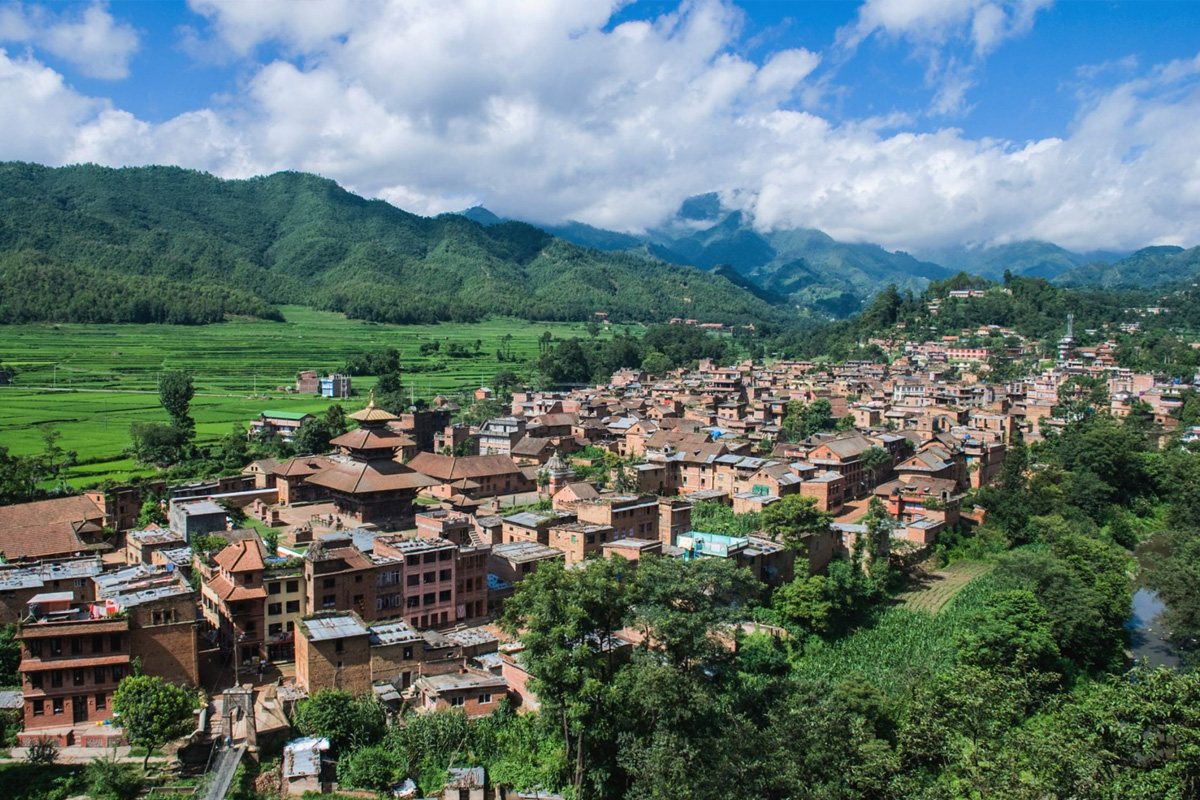
Tea Plantation in Ilam
Ilam, known as the "Queen of the Hills," is a picturesque district in eastern Nepal and one of the best places to visit in Nepal. It is renowned for its scenic tea plantations spread across rolling hills and misty valleys. The tea industry here has been thriving since the 1860s, making Ilam one of Nepal's oldest tea-producing regions.
The climate and terrain of Ilam are perfect for growing tea. With elevations ranging from 1,000 to 2,000 meters above sea level, the region enjoys cool temperatures and ample rainfall, ideal conditions for producing high-quality orthodox tea. Ilam is especially renowned for its black, green, and oolong teas, each known for its unique flavor and aroma.
Visitors to Ilam can explore vast tea estates and witness the meticulous process of tea cultivation and production. Many plantations offer guided tours, allowing guests to walk through the verdant tea gardens, watch workers pluck tea leaves, and learn about the various stages of tea processing. Some places even let visitors experience tea leaf picking firsthand.
The Kanyam Tea Estate is one of Ilam's most famous plantations. Its breathtaking landscape, with tea bushes neatly arranged in geometric patterns across the hillsides, offers stunning photo opportunities. The estate also features viewpoints where visitors can enjoy panoramic views of the surrounding mountains and tea gardens.
Beyond the tea plantations, Ilam offers other attractions for nature enthusiasts. The region is home to diverse flora and fauna, making it perfect for hiking through forests, spotting rare birds, and exploring nearby rivers and waterfalls. Mai Pokhari, a natural lake surrounded by forest, is another popular destination in the area. For those interested in experiencing local culture, you can also rent traditional Nepali attire to wear while taking pictures against the backdrop of Ilam's stunning natural scenery. This provides a unique opportunity to immerse yourself in the local culture while creating memorable photos of your visit.
To fully experience Ilam's tea culture, visitors can stay in tea garden resorts or homestays. These accommodations often provide opportunities to taste various local teas and learn about tea preparation techniques. The warm hospitality of the local people adds to the charm of the Ilam experience.
Reaching Ilam is relatively easy. Visitors can fly from Kathmandu to Bhadrapur airport, followed by a scenic drive to Ilam. Alternatively, bus services are available from major cities in Nepal.
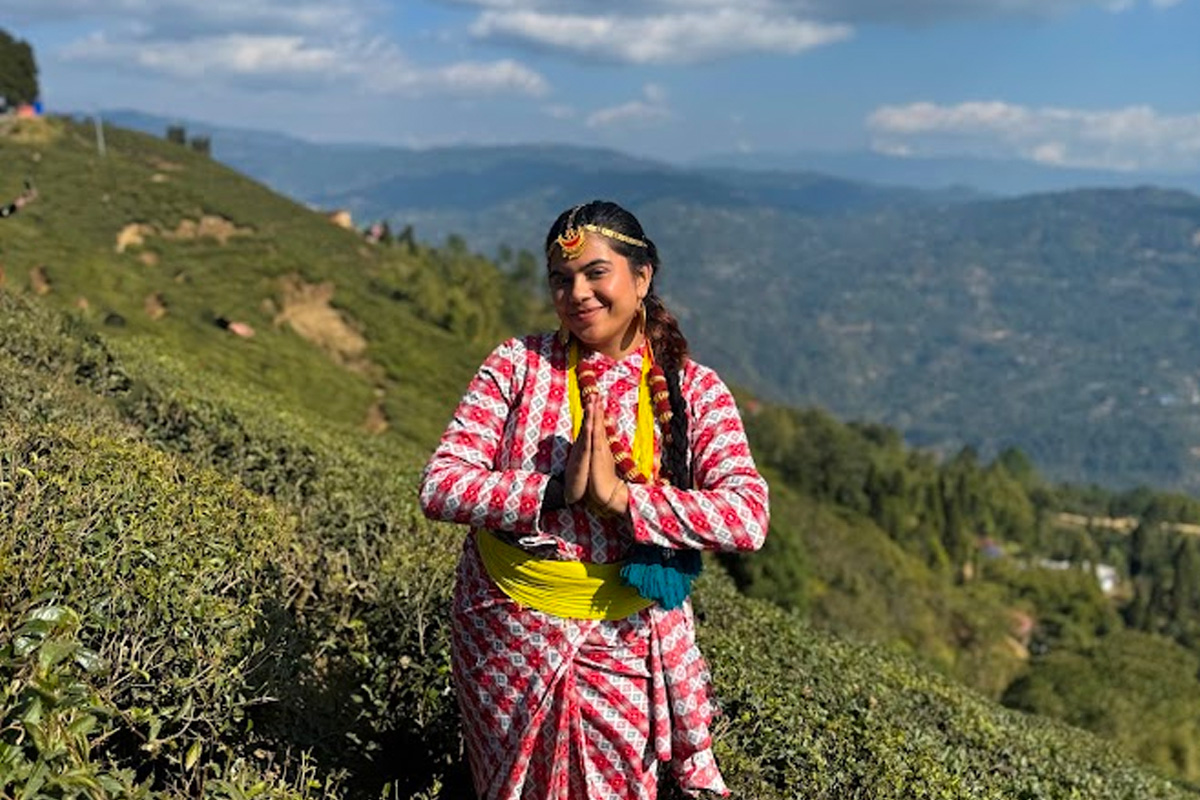
Rara Lake, the Biggest freshwater Lake in Nepal
Often referred as the "Queen of Lakes," Rara Lake is Nepal's largest and deepest freshwater lake. This pristine body of water, located in the remote Mugu district of western Nepal, should be on every traveler's bucket list when visiting Nepal.
Situated at an altitude of 2,990 meters (9,810 feet) above sea level, Rara Lake is surrounded by lush pine forests and snow-capped Himalayan peaks. Its crystal-clear turquoise waters reflect the stunning landscape, creating breathtaking panoramas that change with the seasons.
Exploring Rara Lake offers a unique opportunity to experience Nepal's unspoiled natural beauty. The area is part of Rara National Park, home to diverse flora and fauna, including rare species like the red panda and musk deer. The region's rich biodiversity makes it a paradise for nature enthusiasts and wildlife photographers alike.
Although accommodation options near Rara Lake are limited, they are sufficient for most travelers. You can stay in basic lodges or guesthouses in nearby villages like Murma and Rara. If you prefer a more immersive experience, camping is allowed within designated areas of the national park. Remember to bring warm clothing, as nights can be chilly even in summer.
When visiting Rara Lake, there are plenty of activities to enjoy. Hiking and trekking in the surrounding hills offer stunning views of the lake and mountains. Boating on the calm waters allows you to fully appreciate the lake's serenity. Fishing enthusiasts can try their luck catching the local "Asala" fish, though you will need a permit.
Getting to Rara Lake has become easier in recent years, but it still requires some effort. The most common route is to fly from Kathmandu or Nepalgunj to Talcha Airport, followed by a short trek or jeep ride to the lake. Alternatively, adventurous travelers can undertake a multi-day trek from Jumla or other nearby towns.
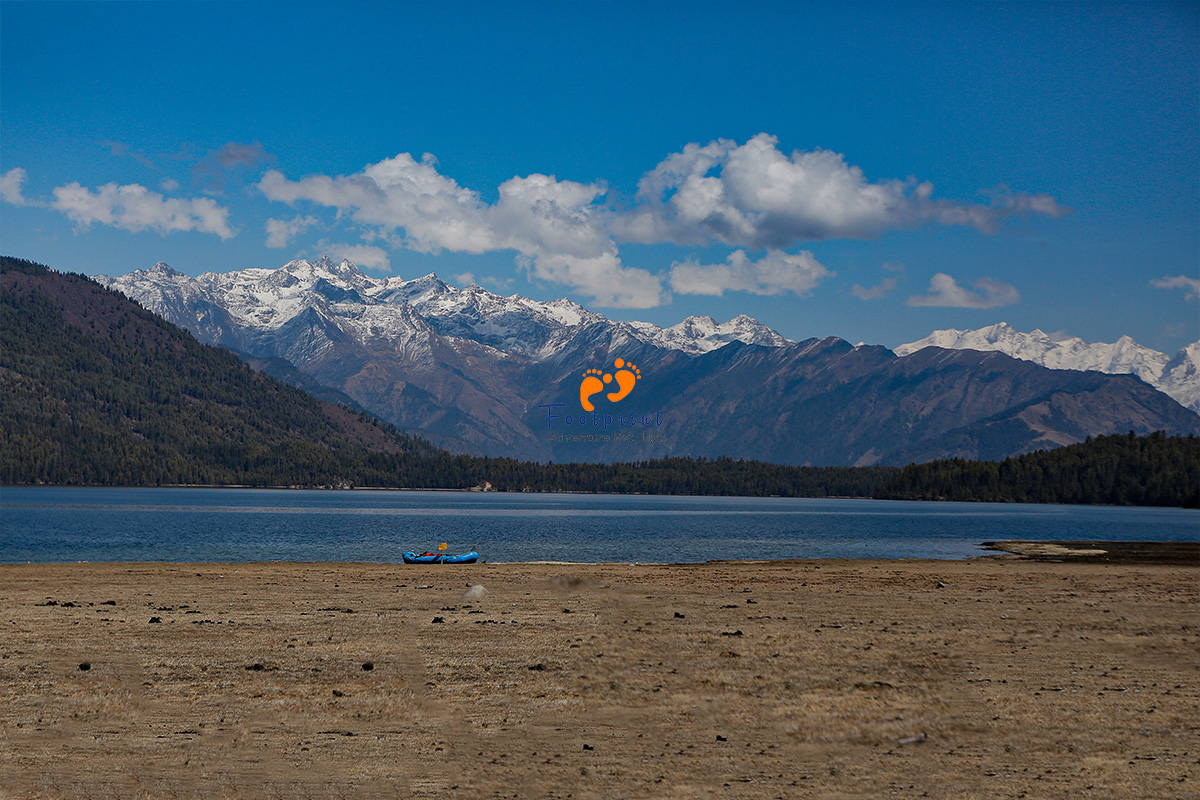
Stay in Dwarika’s Property in Dhulikhel
Dwarika's Resort in Dhulikhel is an enchanting retreat that most travelers miss, but you shouldn't overlook it when exploring Nepal. Located just a short drive from Kathmandu, this luxurious resort offers a serene escape from the hustle and bustle of city life. It's one of the best places you must visit in Nepal outside Kathmandu.
Situated on a hilltop, Dwarika's Resort provides breathtaking views of the Himalayas and Dhulikhel's lush greenery. The resort combines traditional Nepali architecture with modern amenities, creating a unique and comfortable atmosphere. Each room is thoughtfully decorated with local crafts and materials, offering a warm and inviting ambiance.
One of the resort's main attractions is its panoramic view of the Himalayas. From here, you can witness spectacular sunrises and sunsets over the mountain range, offering a serene and awe-inspiring experience that many miss when focusing on more popular tourist spots.
The resort’s holistic wellness approach is another major highlight. You can participate in wellness activities like yoga, meditation, and Ayurvedic treatments to rejuvenate your mind and body. The outdoor infinity pool, with its stunning panoramic views of the mountains, adds to the resort's relaxing atmosphere.
The organic farm-to-table dining experience at Dwarika’s Resort is another reason to visit. The on-site restaurants serve delicious meals made from fresh, locally sourced ingredients. You can savor traditional Nepali cuisine as well as international dishes while enjoying the beautiful surroundings.
Dwarika’s Resort also serves as an excellent base for exploring the surrounding area. Nearby attractions include the ancient Namo Buddha monastery and the charming Newari town of Panauti, both of which are often missed by travelers.
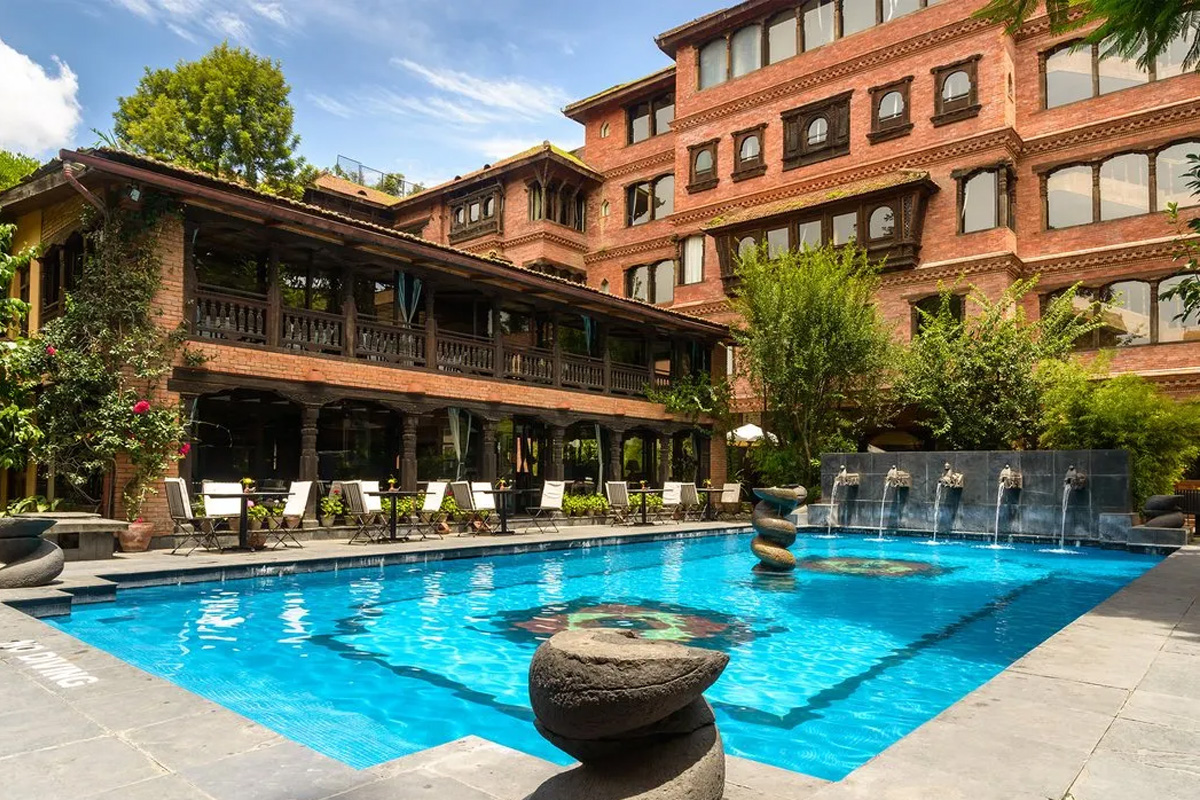
Conclusion
When you explore Nepal, you can discover many amazing places that not everyone knows about. These include beautiful temples, peaceful lakes, and charming villages. Visiting these less crowded areas allows you to experience how Nepali people live and enjoy their traditions firsthand. Though you might need to travel a bit more to reach these places, the experience is worth it. You'll taste delicious local food, see stunning views, and learn about Nepal's history and culture in a more personal way. This makes your trip to Nepal even more special and memorable.
Frequently asked questions
Which place is most visited in Nepal?
The most visited place in Nepal is Kathmandu Valley. It's renowned for its rich cultural heritage, including UNESCO World Heritage sites like Swayambhunath (Monkey Temple), Boudhanath Stupa, Pashupatinath Temple, and the ancient city of Bhaktapur. Kathmandu Valley attracts tourists from around the world for its historical significance, vibrant markets, and the gateway it provides to trekking and adventure activities in the Himalayas.
Are there any off-the-beaten-path trekking routes in Nepal that are highly recommended?
Some highly recommended off-the-beaten-path trekking routes in Nepal include Upper Dolpo Circuit, Makalu Base Camp Trek, Manaslu Circuit Trek, Kanchenjunga Base Camp Trek, and Ruby Valley Trek.
Which national parks or wildlife reserves should I consider beyond Chitwan?
Bardiya National Park and Rara National Park offer diverse wildlife and serene natural beauty, perfect for birdwatching and peaceful exploration.
